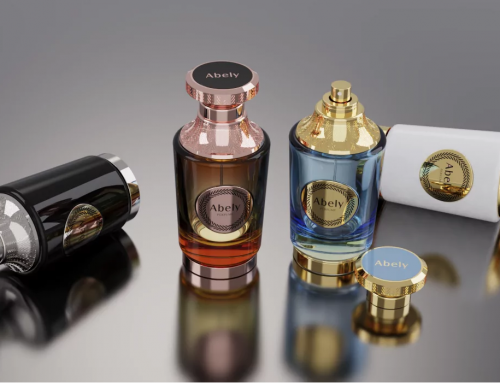Printing plays an essential role in perfume bottle manufacturing. As a crucial element for designing custom perfume bottles, they offer a lot of room for innovation and creativity. At the same time, they can be utilized through different methods, such as heat transfer printing and water transfer printing. What is more, the perfume bottle wholesale industry features products using a great method.

Both approaches require heat, pressure, and time to stick a pattern onto the product. But then, each has its own set of procedures that defines its uniqueness. Moreover, perfume bottle manufacturing companies will pick one that suits their needs the most. Today, we will compare both techniques to see which of them turns out to be the better option for perfume bottle manufacturing.
Process of Heat Transfer Printing
Heat transfer printing is pre-printed patterns or images utilizing offset printing, silkscreen printing, or digital printing. Subsequently, they can be one color or multicolor. Heat transfer printing offers a lot of simplicity in the entire process. The whole process is minimized down to one single step. Nevertheless, breaking down the approach to the vital steps, it would be something like this:
- Create Your Design and Print It:The design is created digitally on computer software and then printed on transfer paper. This paper is specifically designed to allow you to paste your print onto the surface of your product.
- Set the Substrate and Transfer in Place:Place the substrate in place onto the surface, where the transfer will be printed. Make sure it is not skewed in any areas since they might damage the final output.
- Application of Heat:This step can vary, but the general idea is to deploy heat from one means to transfer the design from the film to the product surface.
- Remove the Film:After the transfer carrying the design has been printed, remove the substrate film by peeling it off like a sticker.
Process of Water Transfer Printing
Water transfer printing refers to a surface embellishing process where detailed illustrations like carbon fiber, wood grain, camouflage, etc., are spread over 3D plastic products. Water transfer printing usually doesn’t involve multiple masking or painting processes, making it more efficient than color masking printing. It can get broken down into six significant steps:
- Film printing:This process requires printing various patterns on the polymer films.
- Primer spray: Many materials must be coated with a layer of adhesive, such as metal, ceramics, etc.If you want to transfer different patterns, you must use different background colors, such as brown, brown, ocher, etc. for wood grain.
- Film extension:Let the film lay flat on the water, and wait for the film to be stretched smoothly.
- Transfer: In this process, we will use water pressure to print the activated pattern on the printed material.
- Washing: This process requires washing the remaining impurities of the printed work piece with water.
- Drying: This process requires drying the printed work piece. One should be noticed that the drying temperature depends on the quality and melting point of the material.
- Varnishing: This process is an upgrade of the surface treatment, which delivers a smoother and glossy feel to the surface while gives sturdy protection to the decals permanently.
How They Apply in Perfume Bottle Manufacturing
The perfume bottle manufacturing industry makes use of printing for customizing the aesthetic of custom perfume bottles. They can cater to various shapes and sizes. Not limited to flat surfaces, unlike screen-printing methods, they can work around edges and unique shapes as well.
Pros and Cons in Custom Perfume Bottle Printing
The pros and cons of heat transfer printing are as follows:
Pros
- It doesn’t require the steps of plate making, printing, and repeating color registration, thus easy to print.
- It has better compatibility with different materials.
- It can reflect the transition of colors.
- There will be no problem of color registration with heat transfer printing.
Cons
- It feels hard to the touch and has poor air permeability.
- Pulling may cause small cracks in the heat transfer printing.
- The finished product has relatively poor firmness and needs to be brushed with protective film.
On the other hand, the pros and cons of water transfer printing are given below:
Pros
- It can transfer any natural texture, photos and graphics files on the product, with strong aesthetics.
- Water transfer printing technology can overcome the problems of complex shapes and dead corners that cannot be produced by general traditional printing.
- It can be printed directly and transfer immediately.
Cons
- Not applicable for some materials.
- Repetitive printing may not be purely identical.
- Its transfer graphics are easily deformed.
Considering all the data we have gathered, both methods are effective in their respect and have their pros and cons. People can choose based on the application. Would you like us to help you know where these two methods can be applied? So, let’s see:
Heat transfer printing addresses the eventual fate of decorating technology with various application opportunities while being the cleanest single-step process for a photograph’s sensible print on products. On the other hand, the water transfer printing technique is broadly utilized to decorate products. Notwithstanding, films can get used for a wide range of substrates. These may incorporate fiberglass, plastic, ceramics, wood, and metal. Usually, if the product can be dunked in water, hydrographic printing methods can be employed.
Ending Notes
If you’re looking for an ideal and reliable partner for perfume packaging solutions, then make sure to approach us at Abely Perfumes. Abely experts carry the best deals in the finest of quality and offer the advantages of one-stop services, customized projects, efficient production, quality assurance, and others. To learn more about Abely’s services, please click here.



